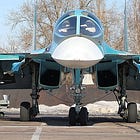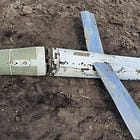Note: The following text was originally posted on my X/Twitter account.
According to the Ukrainian military, Russia employed a total of 4390 guided bombs against Ukraine over the course of August 2025. While official figures such as this are oft-repeated, it is important to recognize that these are not as impressive as they may appear at face value.
Note: This post expands on a fairly lengthy analysis that I posted in March 2025:
I offered background on Russia’s wartime development of guided bombs in May 2024:
The figure for August 2025 presumably refers to the employment of UMPK and UMPB guided glide bombs, which were only introduced long after February 2022, as well as much smaller—seemingly almost token—numbers of other Russian guided bomb designs that were introduced before February 2022. Aerial bombs, whether guided or otherwise, are not like other strike munitions, given that these must be carried and released by some form of aircraft. As a result, the number of guided bombs employed in a given timeframe means little without reference to the number of combat aircraft sorties used to carry and release—deliver—said number of guided bombs to the intended targets.
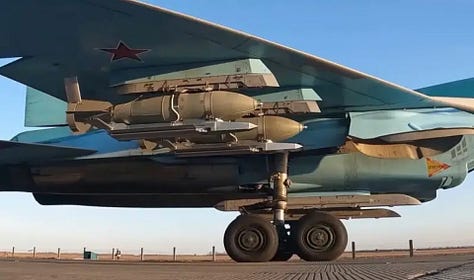
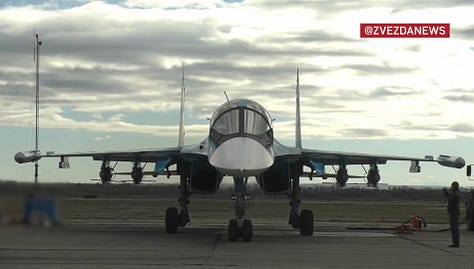
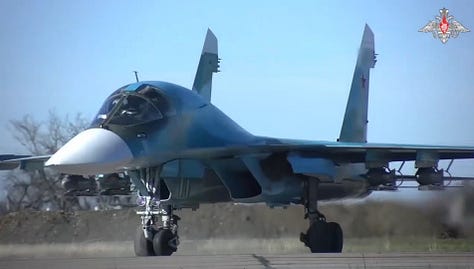
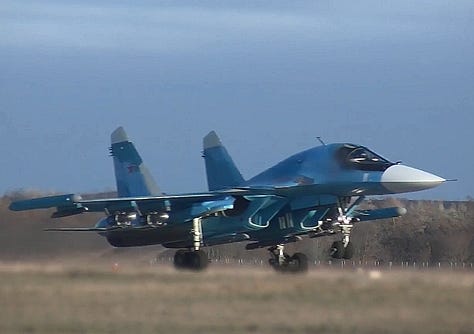
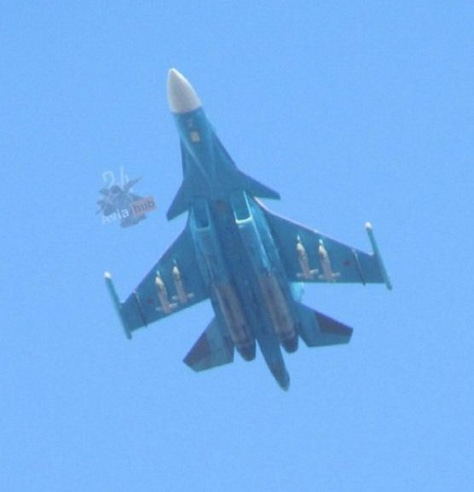
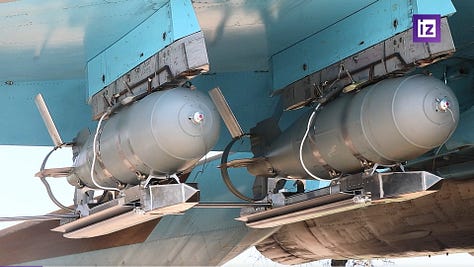
While the Ukrainian military has not disclosed such figures, observers can estimate the figure themselves. Russia's UMPK and UMPB guided glide bombs appear to be primarily—if not exclusively—carried and released by the Russian Air Force's Su-34 strike fighter aircraft fleet, a fleet that is only a subset of a much larger—and so far breathtakingly ineffectual—heterogeneous fleet of crewed fixed-wing combat aircraft. As things stand, each Su-34 appears to be limited to carrying up to four 500-kilogram-class or up to four 250-kilogram-class guided bombs per sortie. Each Su-34 can only carry up to three of the much larger and heavier 1500-kilogram-class and only one of the 3000-kilogram-class guided bombs per sortie. All things considered, the Su-34 variants that are currently deployed by the Russian Air Force punch below their literal (maximum take-off) weight when it comes to employing guided standoff air-to-ground munitions.
While the figure of 4390 guided glide bombs employed over the course of August 2025 almost certainly includes the employment of a non-zero number of 1500-kilogram-class and 3000-kilogram-class guided bombs, it is analytically productive to assume for the moment that Russia exclusively employed a total of 4390x 500-kilogram-class or 250-kilogram-class guided bombs over the course of August 2025. With each Su-34 being limited to carrying up to four guided bombs of such weight per sortie, we can convert the figure of 4390 guided glide bombs to a minimum of Su-34 strike sorties 1097.5 sorties over the course of August 2025. It goes without saying that the Russian Air Force would have to generate a greater number of sorties if some Su-34 were less heavily loaded for whatever reason and if Russia employed 1500-kilogram-class and 3000-kilogram-class guided bombs in August 2025, which it almost certainly did.
There are 31 days in August. Hence, the minimum figure for the average number of daily sorties required to employ 4390 guided bombs over the course of August 2025 is 31.5 sorties per day. As explained earlier, the real figure is almost certainly higher, but we can use 31.5 sorties per day as a baseline figure. Given the nature of the Russia-Ukraine War, the stakes for Russia, the immense human and economic cost of the war for Russia (as well as Ukraine), and the highly elevated pedestal that so many observers and analysts have placed the Russia-Ukraine War upon when considering "the future of war," the figure of a minimum of 31.5 sorties per day to release a total of 4390 guided bombs over the course of August 2025 is simply pathetic.
The Russia-Ukraine War is a clear-cut "high-intensity" conflict in its fourth year that has likely seen a million or so casualties and currently involves the active employment of over a million personnel along the frontlines. The Gulf War was a brief but extremely high-intensity conflict in which the American-led coalition is reported to have undertaken around 100,000 aircraft sorties. Even if we include the sustained buildup of forces, the Gulf War was a very brief conflict. Even if it had a duration of a full year, we would still be dealing with an average of over 270 sorties per day. While the figure of a minimum of 31.5 sorties per day does not count the many air-to-air and other sorties generated by the Russian Air Force in the context of the Russia-Ukraine War—as opposed to operations elsewhere in Russia—the central point still stands: we are not dealing with very large-scale aerial air-to-ground operations.
As with so many aspects of the Russia-Ukraine War, the aggregate figures are very large but tend to speak more to the duration of the war than its daily intensity. Returning to the total number of guided bombs that Russia reportedly employed over the course of August 2025, we are dealing with the average daily release of just 141.61 guided bombs per day. This is in a context of a war that is being waged over some 1000 kilometers of actively contested frontage. That is, we are dealing with an average of 0.14 Russian guided bombs employed against each linear kilometer of actively contested frontage over the course of August 2025—the figure that accounts for surface area will be much smaller still. This is also transpiring in a context in which the Russian Air Force and the Russian military more generally have few substitutes for even 250-kilogram-class guided bombs in terms of destructive effects and range. The only munitions that Russia uses in larger numbers on a daily and a monthly basis are unguided artillery shells, unguided mortar shells, (likely) unguided artillery rockets, and, above all, armed "FPV" multirotor drones.


